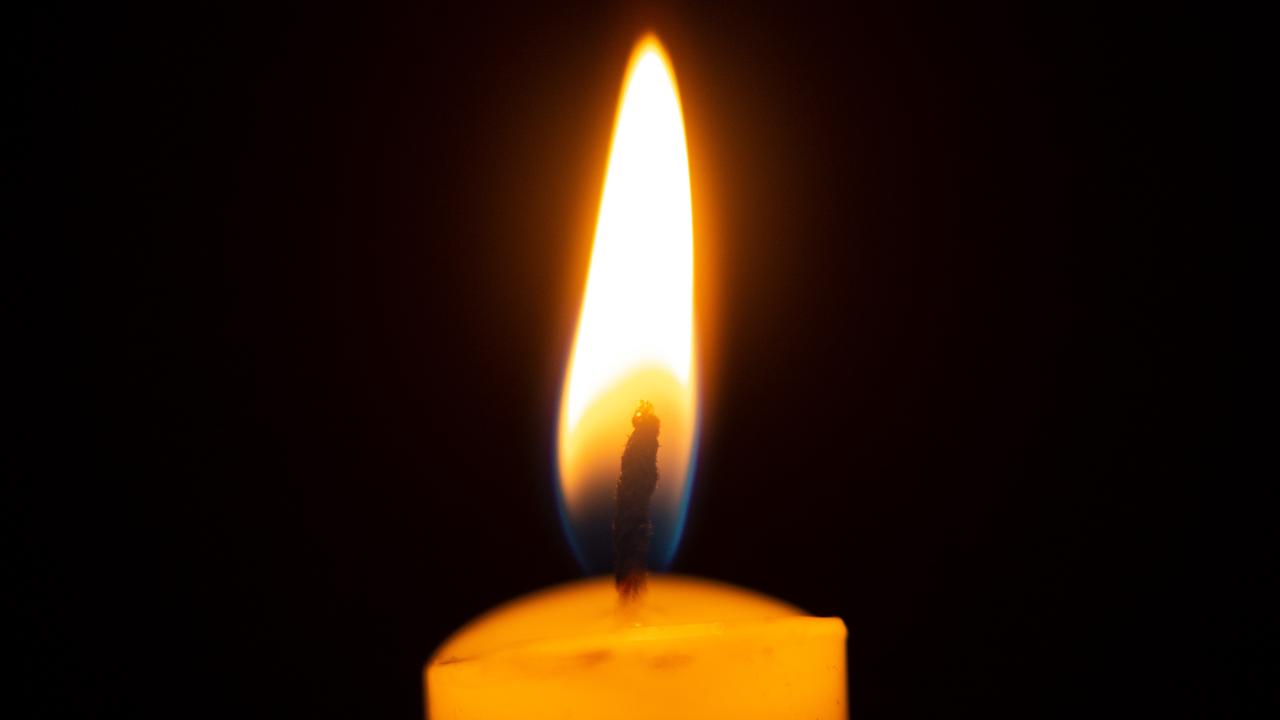Remembering the short life of Aussie Rules player and Digger Alan Cordner
THE short life and sudden death of Aussie Rules player Alan Cordner in 1915, was just a snapshot of the bigger picture of what happened to ordinary men in extraordinary times.

ALAN Cordner played the game of his football life on April 25, 1914.
That date, not yet etched on the Australian psyche, produced one of the most remarkable starts to a VFL season when two matches produced thrilling draws.
The first involved Cordner’s former team, Geelong, who could not be separated from Essendon. And his adopted side, Collingwood, fought out a dramatic draw with Carlton at Victoria Park.
It was Cordner’s 11th game for the Magpies, having played three with Geelong a few years earlier.
1916: DIGGERS BRING FOOTY TO LONDON
JAMES’S STORY: AFGHAN AFTERMATH
HECTOR’S STORY: GROWING UP AT WAR
That match is best remembered for Collingwood champion forward Dick Lee’s spectacular mark, which was the one of the first captured on still camera.
Cordner was at the other end of the ground when Lee flew through the air to drag down an iconic early image in Australian football.
But the 23-year-old from a well-known western districts family made his own impression that afternoon as he was described as part of the “backbone” that held Collingwood together.
Exactly a year later, to the day, Cordner was dead, even if his family would not receive official confirmation for yet another year, due to the chaos that was Gallipoli and the communication breakdown of war.
The short life and sudden death of Joseph Alan Cordner, known to his family as Alan, was just a snapshot of the bigger picture of what happened to ordinary men in extraordinary times. During those fractured years when more than 60,000 Australians made the ultimate sacrifice in World War One, it was like the young country had lost a generation of men who could have made it even greater than it intended to be.
Cordner is said to have been the first VFL footballer to have enlisted when the first calls were made for an Australian expeditionary force. He signed up on a Saturday morning, on August 22, in Melbourne, enlisting in the 6th Battalion.
He was listed as single and a clerk at the Metropolitan Gas Works, acknowledged he had been in the school cadets at Hamilton College, and listed his bank manager father, Isaiah Joseph ‘Joe’ Cordner, as his next of kin.
And there he almost steps back from the pages of his war achieves — a typical “Collingwood six-footer” at five feet and eleven-and-a-half inches; weighing 12 stone; with a dark complexion, brown eyes and black hair.
On the same day he enlisted, Cordner played his last match for Collingwood, against South Melbourne, at Victoria Park. A teammate, ‘Paddy Rowan’ (whose real name was Percy Rowe) and an opponent, Bruce Sloss, would also pay the supreme price, even though it would come later than Cordner, and on the Western Front, not Gallipoli.
Not many descriptions remain of Cordner’s football prowess, but his old school said “for as a mere boy, Alan Cordner, could kick a mighty ‘drop’ and in those days few, if any, could hope to compete with the steel-like wrists of those arms, which scored skywards, and baffled all opposition in quest of a ball.”
Sadly, Alan’s mother had passed away in 1901, when he was only 11, and his brother, Clem, was nine. His father remarried and went to have three more sons, and a daughter. Clem would serve in the First World War in the Light Horse, and his half-brother, Larry, who was four when Alan left for the war, would also serve in the Middle East and New Guinea in the Second World War.
Soon after that final game, Alan moved to Broadmeadows camp, before preparing to leave with the first AIF, though not before Collingwood had made a special presentation to him and teammate Harry Matheson.
The Herald detailed: “The executive of the Collingwood Football Club made the presentation to two of their players — A. Cordner and H. Matheson — who have enrolled in the service with the Australian Expeditionary Force. (President) J. Sharp handed the men two gold wristlets watches, wishing them success and good luck.”
And in the club’s annual report of March, 1915, it was recorded that four players and a committee member had enlisted, saying “good luck and safe return.”
Collingwood started its 1915 season on April 24, with a win over Essendon. At that time Cordner was ready to embark on the fight of his life, almost 15,000km from Victoria Park.
Having “served the colours” in Egypt after embarking from Australia on the Honorata the previous October, Cordner and his mates from the 6th Battalion were preparing to launch an attack on a stretch of the Gallipoli Peninsula, against the Turks.
His old school had described him as “a rough-hewn stone” and the 24-year-old would need every ounce of that toughness and strength of purpose in the coming hours.
On April 25, 1915, Cordner would land on Anzac Cove and make his way up the treacherous slopes that confronted him, rushing inland as best as he could against the constant drill of gun and shell fire.
He would first be listed as missing — as would many of that mad day and mad night — but would be presumed dead when he was not among the wounded.
Cordner was one of at least six VFL footballers known to have been killed on that first day.
The others were University’s Rupert Balfe (whose teammates had included Ted and Harry Cordner, cousins of Alan), St Kilda’s Claude Crowl (who debuted on the same day as a bloke called Roy Cazaly), South Melbourne’s Charles Fincher. Carlton and Melbourne’s Fen McDonald (who debuted on the same day in a different team to Crowl) and Melbourne’s Joe Pearce (who died in a boat before it even landed on the beach).
One of Cordner’s superiors wrote: “The casualty (Cordner), the informant, and two or three others got separated from their own men ... they were in the firing line about two miles from the beach. The informant was next to the casualty when he was shot. He tried to make the casualty speak and shook him, but could not move him from where he was.
“(The) informant really thought the casualty was dead, but admits that he may have been mistaken.”
The informant was not mistaken. But in a tragic twist, others were, and their mistake would only serve more pain on the Cordner family half a world away.
One nurse suggested she had been told a man, possibly Cordner, had been repatriated from Gallipoli; there was even a report that he had been sent to England.
Another suggested he had been wounded and taken in by another battalion. The most fanciful had him returning to take part in the August offensive on German Officers Trench, four months after he had gone missing.
All of false reports were agonising on a family who wrote incessantly to the authorities asking for news of their beloved son.
One letter from his father, in July 1915, pleaded: “I have not heard from my son ... since his arrival at the Dardanelles. As I have heard more than once from a second son (Clem) who arrived after him, I am anxious.”
Then, three months later: “Could you please let me know of his present whereabouts as no word has been received from him since 20th April last and if he was in hospital, he surely would have sent word.”
The cold, hard reality came long after the Anzacs had evacuated the Peninsula just before Christmas, and as the survivors of that Gallipoli hell went on to even greater horrors in France.
Cordner was officially listed as being dead on April 24, 1916 — a year after it happened — with one soldier writing to his father: “I don’t think there is any reason to doubt that Cordner was lost on the first day at Anzac.” Another suggested: “Don’t place any reliance whatsoever (on the stories of survival). It is with the greatest regret that I can say that one must ... console oneself with thoughts of the gallant way in which he sacrificed his life.”
Larry’s daughter, Jane Heazlewood, said her father — and the rest of the family — had been profoundly affected by Alan’s death.
“I remember my grandfather talking about Alan a lot and my father just absolutely idolised him,” she said.
“Dad was only four when Alan left, but he could remember him, and he sort of followed in Alan’s footsteps in his sport and all sort of things. He has left a very big impression on the family.”
Eighteen years after Alan’s death, his half-brother Larry played one match with Hawthorn — against Collingwood of all sides, which was coached by Alan’s one-time coach, Jock McHale.
Fittingly, Alan’s old school penned a moving tribute to their former prefect and school captain. The Hamiltonian said: “His end, like the sacrifice of many others, is somewhat mysterious. There were so many heroes on that historic day, and we may be sure that Alan Cordner was such a one.
“The isolated heroics of that fateful day will never come to light and we cling to the knowledge that Alan Cordner was one of a small party who, penetrating four and a half miles inland, found themselves cut off by the Turks. Where better to leave him than on the hillsides of Gallipoli doing his duty “as a man is bound to do”, who, fighting, fell that we for whom the death list bears no name, might live secure in the knowledge that the old school spirit reflected in the old ‘Parrot’ was not wanting when the umpire sounded the whistle for this great game.”
Alan’s body was never found, and neither was the gold watch that Collingwood had given him. The ‘old Parrot’ was just 11 days shy of his 25th birthday.


